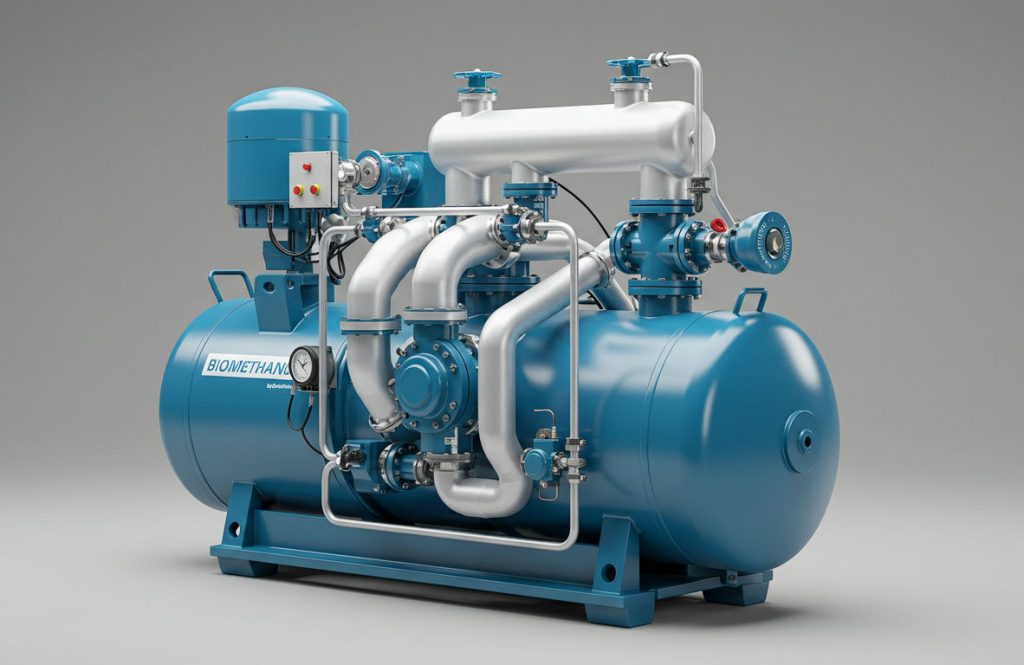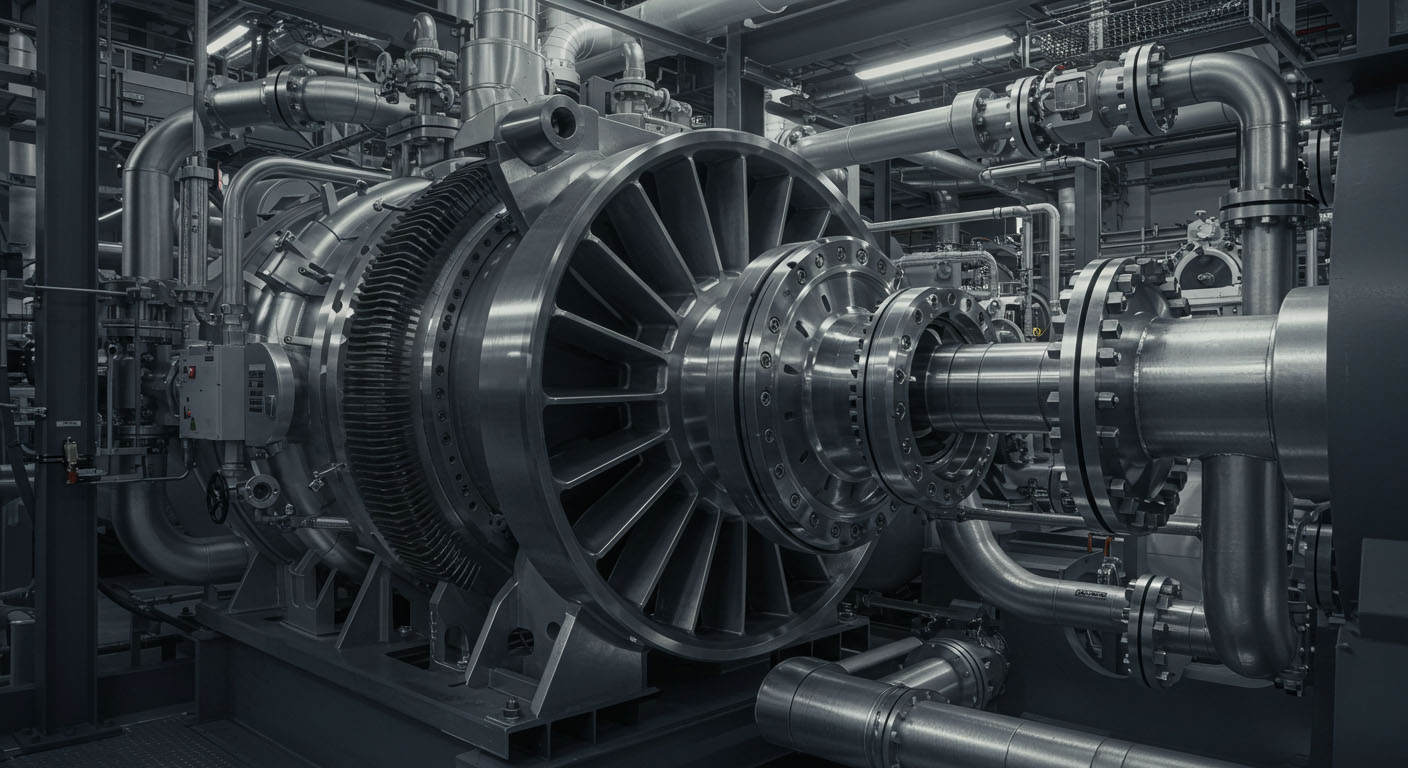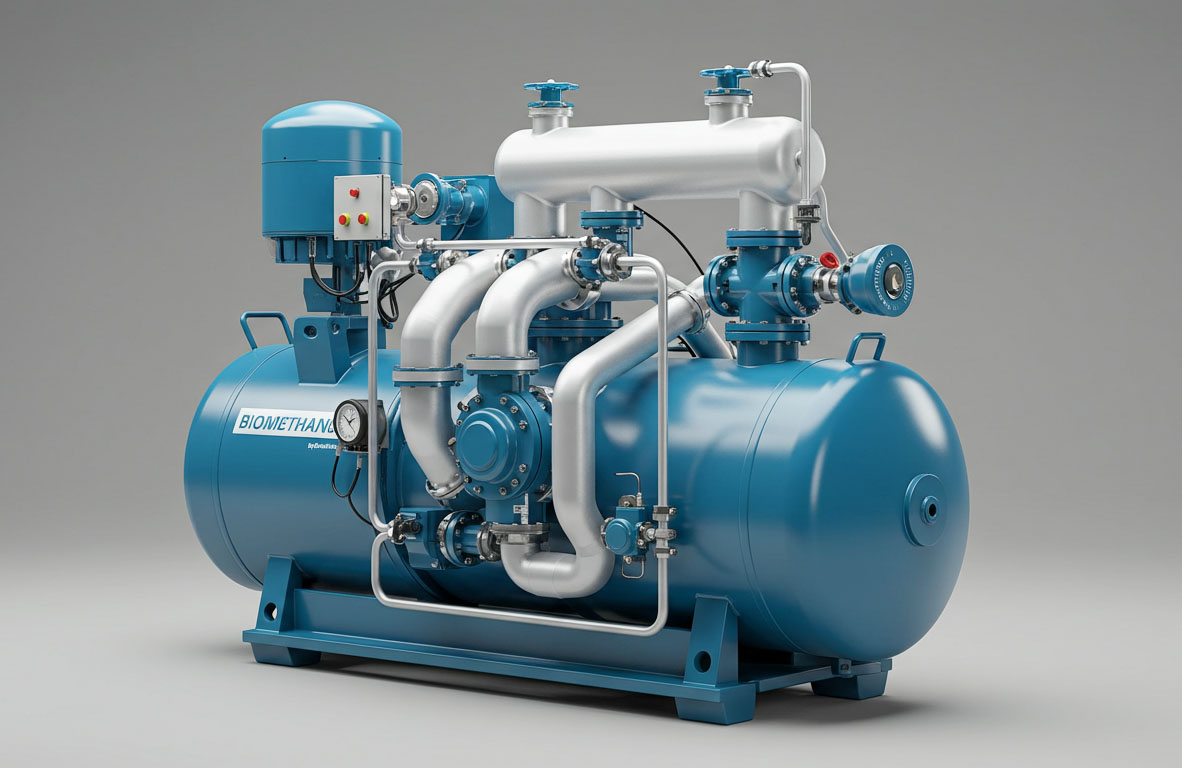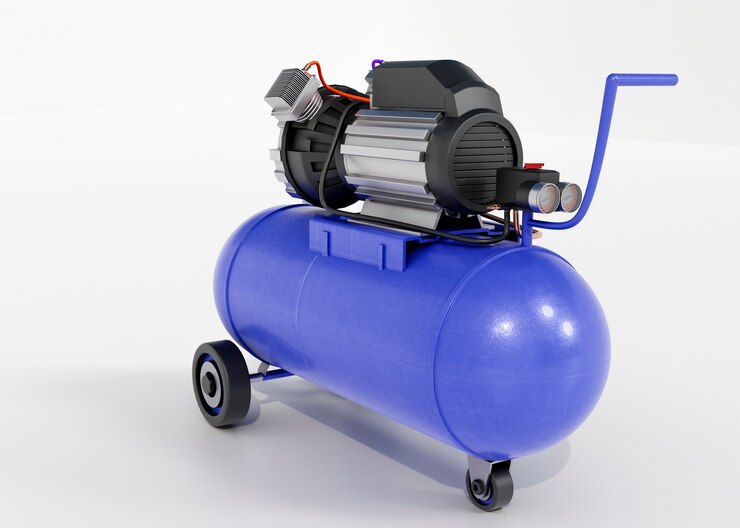Biomethane Compressors: Powering a Greener Energy Future
As the world accelerates its transition toward renewable energy, biomethane has emerged as a crucial player in the clean energy mix. Often referred to as “green gas,” biomethane offers a carbon-neutral alternative to fossil natural gas — but unlocking its full potential relies heavily on one essential technology: the biomethane compressor.

Unlike conventional gas compressors, biomethane compressors are engineered to meet the specific demands of renewable gas production, ensuring the safe, efficient, and environmentally friendly transport and storage of biomethane. Let’s dive deeper into what makes biomethane compression unique — and why it’s central to the future of sustainable energy.
What Sets Biomethane Compressors Apart?
While biomethane shares many physical properties with natural gas, its origins from organic waste introduce unique challenges. Impurities like water vapor, carbon dioxide, hydrogen sulfide, and trace contaminants must be carefully managed even after gas upgrading. Biomethane compressors must be built to:
- Handle Fluctuating Gas Composition: Unlike fossil gas, biomethane purity can vary based on feedstock and upgrading technology.
- Ensure Oil-Free Compression: Preventing contamination is crucial for biomethane injected into public grids or used as vehicle fuel.
- Deliver High-Efficiency Sealing: Any leakage not only reduces efficiency but can undermine the environmental credibility of biomethane projects.
- Operate Sustainably: Compressors must align with the carbon-neutral ethos of the biomethane industry, emphasizing energy efficiency and low maintenance emissions.
These challenges require far more sophisticated solutions than a typical industrial air compressor or standard gas booster.
Why Biomethane Compression is Booming
The biomethane market is expanding rapidly, fueled by climate legislation, decarbonization targets, and the urgent need to find alternatives to traditional fossil fuels. Key drivers include:
- Renewable Natural Gas (RNG) Projects: Biomethane is injected into existing gas grids, supporting the transition without the need for costly new infrastructure.
- Transportation Sector Growth: Compressed biomethane (Bio-CNG) is gaining traction as a low-carbon fuel for trucks, buses, and even ships.
- Waste Management Innovation: Landfills, agricultural operations, and wastewater plants are upgrading biogas into valuable biomethane, requiring robust compression solutions.
- Corporate Sustainability Goals: Industries are turning to biomethane to reduce their carbon footprint and meet net-zero pledges.
As a result, demand for reliable, efficient biomethane compressors is surging across Europe, North America, and emerging markets like Southeast Asia.
Key Technologies in Modern Biomethane Compressors
Innovations in compressor technology are helping the biomethane sector grow even faster and more sustainably. Some of the latest advances include:
- Dry-Running Compression Systems: Avoiding oil or lubricants within the compression chamber eliminates the risk of downstream contamination.
- Energy-Efficient Motor Integration: High-efficiency variable frequency drives (VFDs) optimize energy consumption based on fluctuating flow rates.
- Corrosion-Resistant Materials: Stainless steel and specialized coatings ensure durability against any residual contaminants.
- Smart Monitoring and Remote Diagnostics: IoT-enabled compressors allow operators to track performance, predict maintenance, and reduce downtime.
At LEiYAO Compressors, we integrate these technologies into tailor-made solutions that align perfectly with the operational needs of biogas upgrading facilities, refueling stations, and industrial consumers.
Applications Beyond the Obvious
While biomethane compression is critical for gas grid injection and vehicle refueling, innovative applications are expanding its relevance:
- Off-Grid Energy Supply: Biomethane-fueled microgrids offer resilient power solutions for remote or disaster-affected areas.
- Agricultural Energy Systems: Farms are compressing their own biomethane to power operations or sell green gas to the grid.
- Decentralized Industrial Heating: Factories are increasingly adopting compressed biomethane for process heating, reducing dependence on fossil fuels.
Each new application demands a compressor that can deliver consistent performance under varying load conditions — highlighting the importance of custom-engineered biomethane compression solutions.
Conclusion
Biomethane compressors are far more than mechanical workhorses — they are enablers of a sustainable energy revolution. With rising demand for clean, renewable fuels, choosing the right biomethane compressor is critical not just for operational success, but for ensuring that biomethane achieves its full environmental promise.
At huayan Compressors, we are proud to stand at the forefront of this transition, offering industry-leading technology, custom solutions, and global support for the growing biomethane sector.


